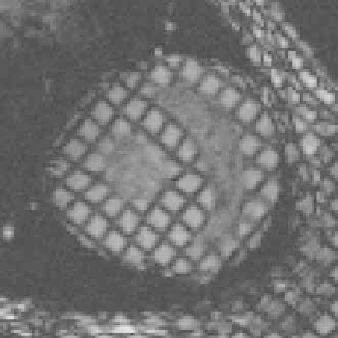Biomedical Engineering Reference
In-Depth Information
(a)
(b)
Figure 2.
MR images from a canine study showing the left and right ventricles in both (a)
the short- and (b) long-axis views.
cubic deformable models [12-16]. The construction in [13, 14, 16] interpolates
each tag plane by an isoparametric surface of the cubic model (B-solid). The
spatial extent of these cubic models extends past the myocardial contours, which
yields nonzero strain values outside the myocardial region. Cylindrical B-spline
models have also been employed that more closely match the shape of the left
ventricle [17, 18]. However, these authors only considered cylindrical parameter
assignments with uniform, nonrational, cylindrical B-splines. We demonstrate that
Cartesian NURBS models that also employ cylindrical parameter assignments out-
perform the cylindrical NURBS models with cylindrical parameter assignments.
The approach described herein constructs a model based on the morphology of
the biventricular anatomical structure for each imaging study using the short- and
long-axis contours in each image. This forces the spatial extent of the model to
be confined within the myocardial boundaries. As an additional novelty, we im-
prove the approximation capabilities of our model by extending the model bases
from uniform nonrational B-splines to its superset; namely, nonuniform rational
B-splines (NURBS). The models are constructed using Cartesian or non-Cartesian
NURBS with both cylindrical and prolate spheroidal parameter assignment.
2.
NURBS MODEL
2.1. Nonuniform Rational B-Splines
NURBS, an acronym for
n
on
u
niform
r
ational
B
-
s
plines, have become the
de facto standard for computational geometric representation [19, 20]. NURBS


